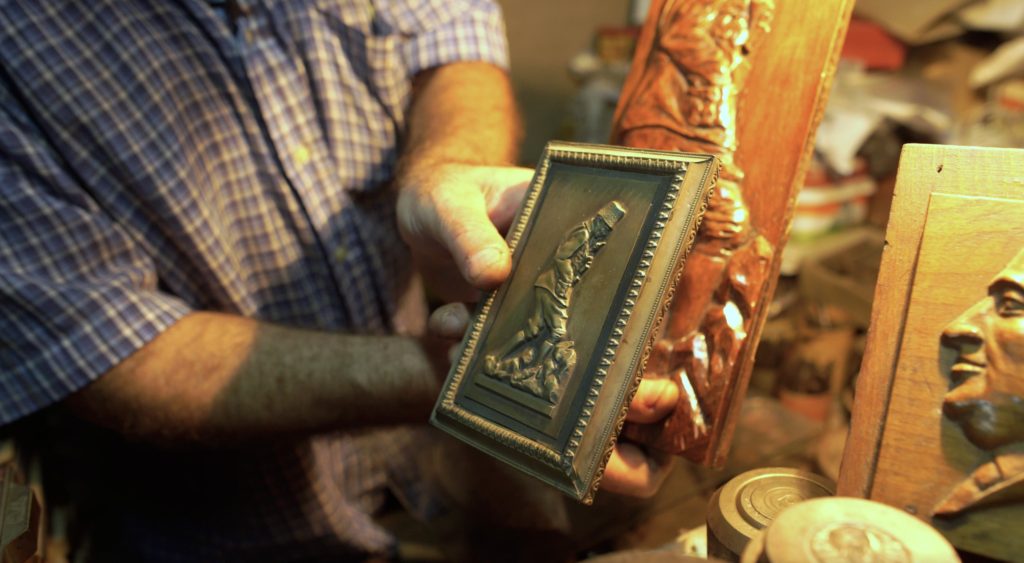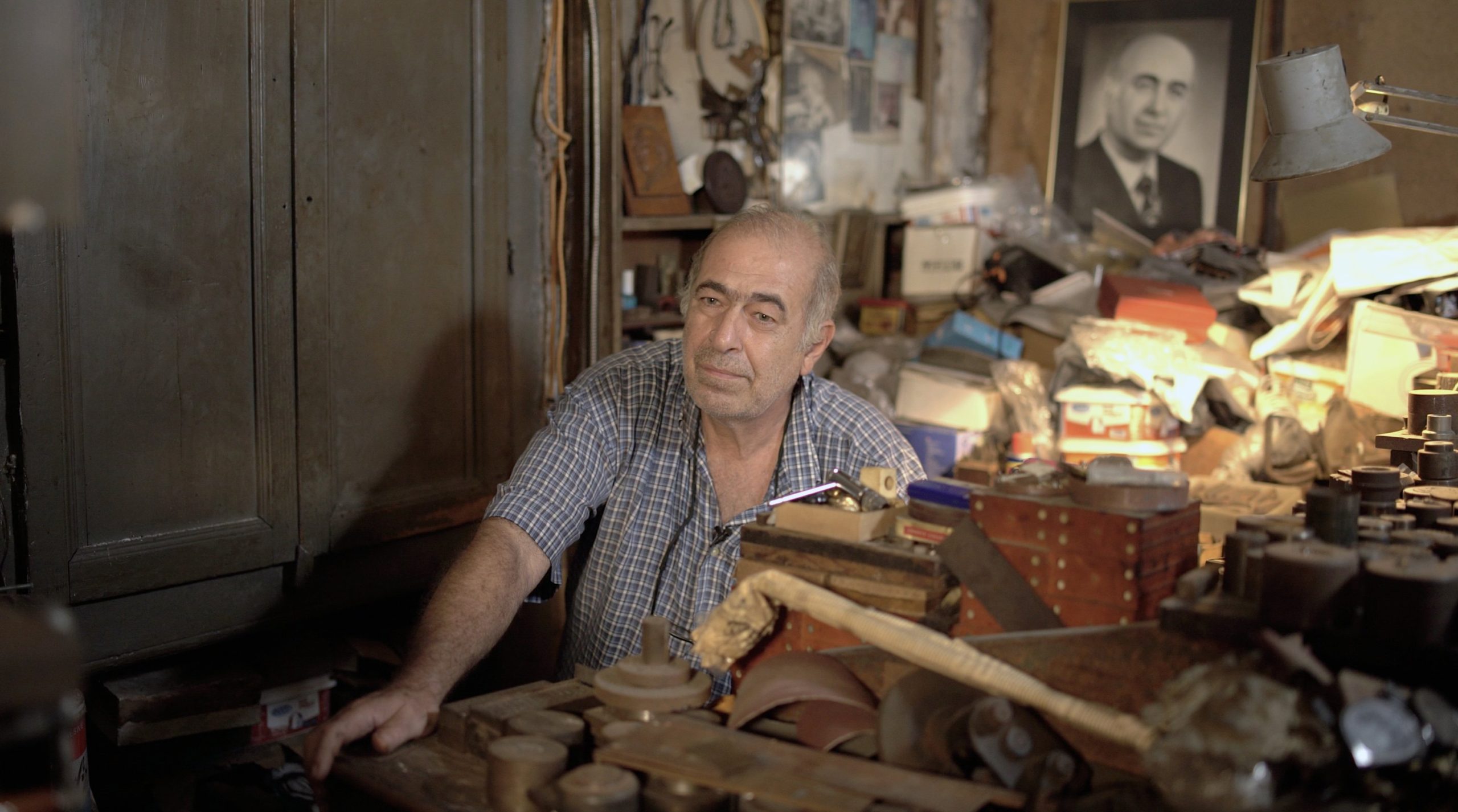Master Bedros Muradyan, Türkiye’s last master in the ancient art of “Hakkaklık,” has dedicated his life to preserving the rich tradition of manual craftsmanship.
Beginning his journey into this intricate world at the tender age of 11-12, he joined his father in their workshop, tucked away inside Zincirli Han in Eminönü.
Here, amid the scent of steel and the echoes of hammers, Bedros meticulously crafts jewellery moulds, medals, buttons, badges and other intricate items, skillfully etching the legacy of his forebears into each piece.
In front of Bedros Usta’s workbench, portraits of statesmen like Mustafa Kemal Atatürk, Bülent Ecevit and Süleyman Demirel, along with various signatures, emblems and pattern moulds, adorn the space.
The art of engraving, known as hakkaklık, reached its pinnacle, especially in the seal arts, during the civilizations of the Akkadians, Mesopotamians, Egyptians, Romans, Seljuks and Ottomans.
Muradyan, explaining that the true essence of a “hakkak” is being a carver, emphasized that while some professionals work with wood, his expertise lies in being a hakkak who works with steel.

The master, who proudly explains to have honed the craft of hakkak under the tutelage of his father Ohannes Muradyan, emphasized that his father was the most senior and skilled practitioner of this trade in Türkiye. He pointed out that even during meetings attended by globally renowned businesspeople, his father’s name is consistently brought up.
“My late father apprenticed under a German master. When World War II began, his master was conscripted into the German army, forcing him to close his shop and depart. At just 16 years old, my father found himself alone. Unable to establish a formal shop due to his young age, he began working unofficially from home. Here, he diligently carried on his master’s unfinished projects for the clients,” Muradyan shared.
Master Bedros, discussing the artistic inclination and genetic heritage of the Muradyans, an Armenian family residing in Istanbul for 400 years, emphasizes the importance of self-cultivation.
“We are two brothers. My younger sibling couldn’t connect with this profession. He stayed with us for a brief period. I was drawn to it because it seemed intriguing and distinct to me. Undoubtedly, there are challenges, but often, the most beautiful things are the hardest to attain,” he added.
Muradyan highlights that there are carving masters in various parts of the world, mentioning: “This craft is carried on by a few individuals in Italy, Austria, and France. Apparently, there is also someone in America currently pursuing this work. However, in Türkiye, my father was the sole practitioner in this field,” he emphasized.
“Once, I entered a shop in France. I had a product I crafted myself in my pocket. I took it out, showed it, and explained that I carved it by hand on steel. The man sat there, examining it for perhaps 30-40 minutes. He exclaimed, ‘How? It’s impossible for this to be done by hand.’ But I asserted, ‘I did it,'” he elaborated.
Muradyan notes that there are now very few manual practitioners of this profession worldwide. In the contemporary era, materials and items are often produced using computer numerical control (CNC) machines. He emphasizes that handcrafted work holds a unique essence, using the phrase ‘It has no soul’ to describe CNC products.
